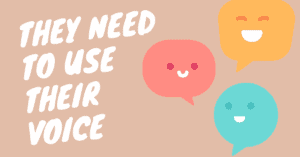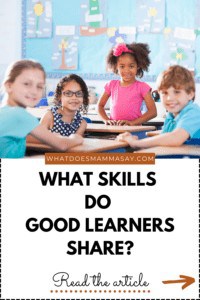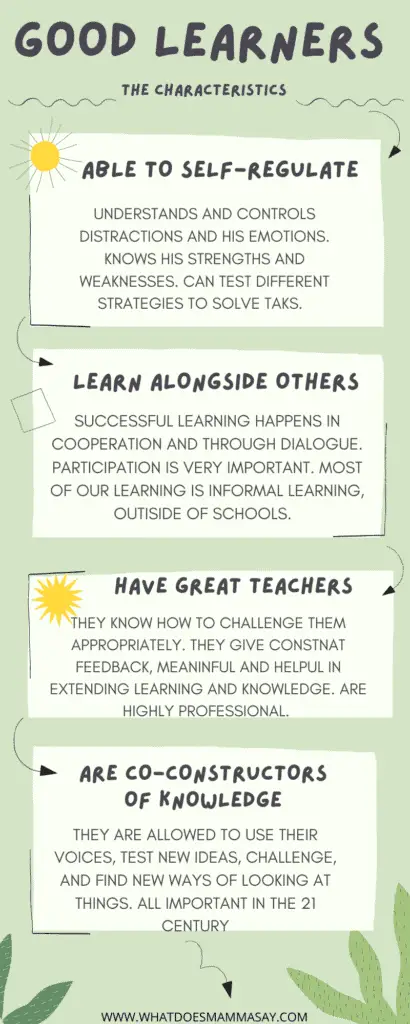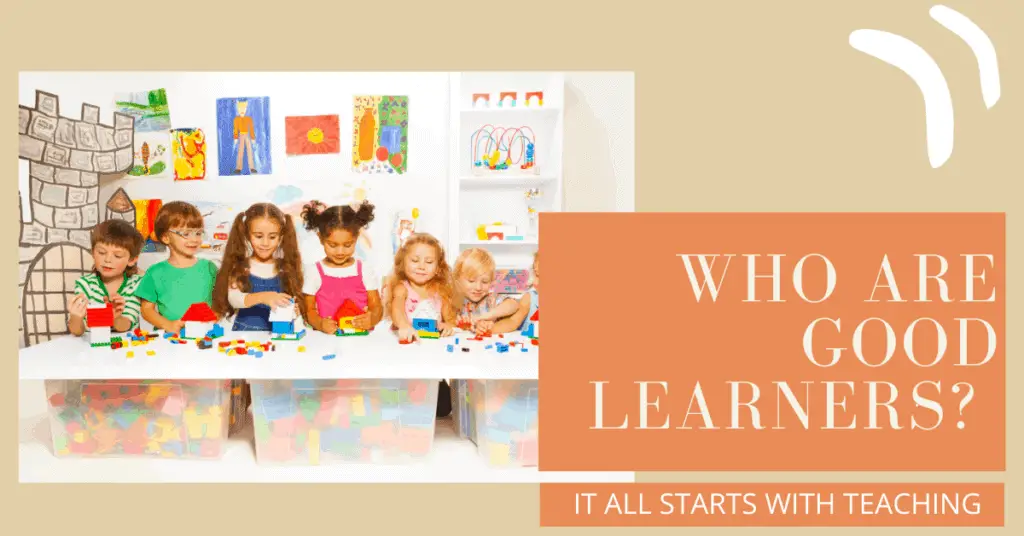Inside: in this article you will read about the characteristics of a learner and how to support children’s learning in schools and at home to become good learners.
Often times I asked myself, all throughout school, and then college, the same obsessive question, that unfortunately guided my every decision.
Am I good enough?
Am I good enough to be chosen? Am I good enough to get into that school?
Good enough for that job? Good enough would govern my life.
It was my strive, but also my limitation.
And in my 10 years in the classroom, I saw the same doubt in my children. The same constant definition of themselves as someone who is not good enough.
To speak up their minds, to make a decision and stick by it, to see themselves for who THEY ARE, not for who they are measured against.
Not good enough of a learner is a label schools, teachers and parents are misled into assigning, consciously and even without knowing.
We are quick to assign labels because our brains need quick sorting systems for all the information coming its way. It helps us separate information, but also people.

And in doing so, we stigmatise, triage and measure people making it hard to separate them from mere conceptual facts.But we also tend to devoid of meaning certain labels, good, bad, excellent can equally be understood as numbers.
Good learners are assigned numbers and they stick. Just as poor students live in the shadow of numbers and can hardly recognise themselves in words such as highly empathetic, great team worker, ambitious, etc.
What do we mean by good learners?
Good learners and good learning is what education is all about. It evolves around the concept of poor being raised to a good standard. But think really hard, what do we mean by good?
Good for when? Good in what context? Good at what? Good based on whose perspective? Good as opposed to excellent? Great? Not good enough?
And this is why I fear that my students, all students will in one way or another become obsessed with the same limitation, not good enough.
What makes learners good? Or better yet, what makes learning good? We cannot separate learners from the learning and learning from the learner. And although there are many different ways of going about learning, to me, the most complex understanding of what learning is comes from a 12-year-old :

‘Learning is what I do as a human, to become a better human. How can exams test really important learning, like learning to love someone, or learning to cope when that person dies? I will try to stop beating myself up about not getting ‘A’ grades in exams because I think I have more to offer to the world than the sum total of my school exam results. (12 year-old student: Williams, 2002)’
Learning to this young boy is not ticking boxes and getting as much knowledge as possible. Knowledge cannot be separated from the individual, it does not happen outside of him, nor is it simply consumed and stored.
Learning happens in context and in relation with others, be them parents, teachers, your neighbour, the postman. Did you know that much of what people learn is without formal instruction (Pollard & Pollard, 2014), so outside of school and without teachers?
Key characteristics of effective learning in today’s world
How we view learning and learners has changed dramatically since I was a small girl. Research over the last 30 years describes new characteristics of effective learning and brings to our attention the following key ideas that are closely connected to learning (Pollard & Pollard, 2014)
- Early foundations/start: the child’s first learning experiences will determine how positive they view learning in general; a positive attitude to learning starting in the early stages of life influence future abilities to organize information, make inferences, discover ways to solve problems

- Meta-cognitive skills: understanding how to learn and learning how to learn are among the most important characteristics of effective learning; it involves becoming aware that learning is happening and how; when learners become mindful of themselves as learners (they know their strengths, how they learn best, what went wrong etc) learning is successful.
- Self-regulation: able to control distractions; control their emotions; understand very well what they are good at and what they can’t yet do; predict the outcome of something, plan ahead, understanding failures, try new challenges; able to monitor and evaluate what they are doing and be prepared to change strategy half way through are all part of the main characteristics of effective learning
- Cultural experience and community participation: participation is extremely important; toddlers need to be provided with activities by the family, the social environment to understand the norms and rules of the culture they inhabit.
This is what makes all learners different, the fact that they are created, shaped and formed by their environment. And they act and learn accordingly.
Read more about how children are seen in schools and how this influences teaching.
And more importantly, among the characteristics of effective learning is connecting it to durability: does it have a long-term impact, does it influence other kinds of performance?
Which are the characteristics of a good learner?
I will introduce, among many of the ideas discovered while reading for my masters, Finland’s idea of the characteristics of a good learner. Simply because their system of ‘no child felt behind’ works. Finland believes that schools need to teach students new skills and types of knowledge required in an unpredictable and changing world.
But at the same time, it plans to make learning possible to all, no matter their conditions. Which is the hardest thing to achieve in education.

Finland argues that good learners are those who have great teachers, excellent teachers, highly trained and professional.
Good learners are those that do not follow a standard curriculum, schools need to teach everyone the same things and lead to the same goal. They also don’t believe that good learners need to race to the top or feel the pressure of high-stake tests.
To support good learners, schools need to create a secure and relaxed, fear-free learning for students.
Finland believes in schools that allows children to be prepared to be wrong too, as this is how new ideas emerge. Schools are socially inspiring places where students learn the social skills they need in life (Dahlberg, 2014).
In other words, Finnish characteristics of a good learner are:
- able to learn social skills in an inspiring school
- able to learn without fear of exams or of being wrong
- those who have great teachers
- who do not follow a standard curriculum
- do not engage in competition
- engaged in activity-based learning
- are problem-solvers, risk-takers and creative
- are able to work in complex social networks, with people very different from them
- are engaged with learning
- are able to create something new and valuable
How can good learners become great learners?
I am currently studying effective teaching for my masters’ programme and effective teaching is strongly linked to great learners. From all my readings, I came to understand that great learners have these common characteristics:

1.Great learners are those able to self-regulate (Dumont et al (2014). In other words, able to understand and control their own emotions and motivation to learn while learning, not giving up, persevering and thinking about which strategies work best to solve the task.
2. Great learners learn best when they learn together.The human brain is primed for interaction, we are social beings that look for company, therefore learning should not be seen as individual, but in collaboration, dialog, cooperation.
3.Great learners are those that are challenged, but without being excessively overloaded. They need to be sufficiently challenged to reach just above their present capacity.
4.Great learners are those who know exactly what is expected of them and receive constant feedback. But feedback needs to be substantial, regular and meaningful, a simple test will not be able to give the learner enough building ground.
5.Great learners are those who are able to transfer knowledge to other contexts too. In the 21 century our children will be constantly addressing unfamiliar problems. Critical-thinking, problem solving and creativity will be very important.
6.Children need to be able to test their new ideas and be allowed to use their voices, their arguments, aspirations to extend their learning. Therefore, great learners need to be active in their learning and become co-constructors, deciding alongside teachers what to learn and how.
In Conclusion
Good learners will only flourish if teaching is focused around them, their interests and knowledge, their identity and background.
Among the characteristics of a good learner please remember: students need to be directly involved in their learning, constantly being given time and space to use their voice, to test their ideas, question things, try things out for themselves.
Talking is a powerful pedagogic tool in doing this. It acts as a bridge to connect the the cognitive and cultural spaces between the adult and the child (Rowe et al, 2011).
We are young and we have doubts. It is completely normal. But yet, these doubts what we carry around in everything we do, become the doubts of our children. Which will limit their aspirations and burden their decisions, and inevitably affect their life.
They might become trapped in their social destiny. Moving away from ‘not good enough’ takes courages, but also aspiration, perseverance and trust. Use your voice to create your destiny! You are good enough!

Hi. I am Monica, an experienced ESL teacher and early years student, mother to a preschooler and passionate reader.

